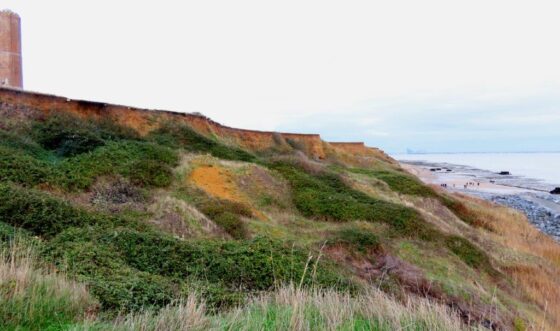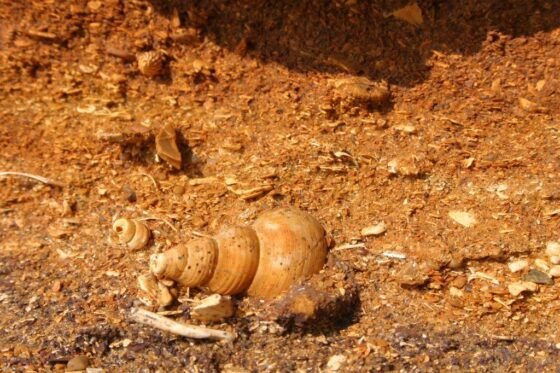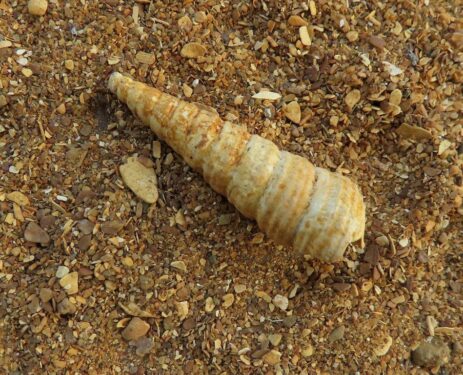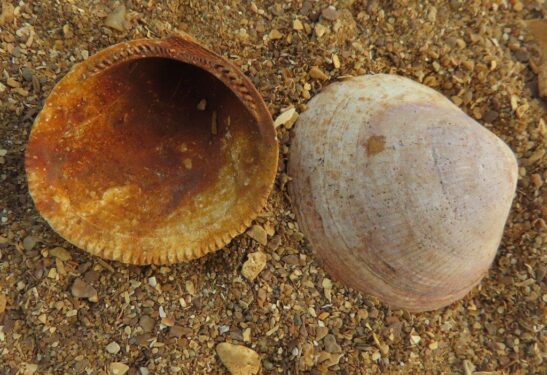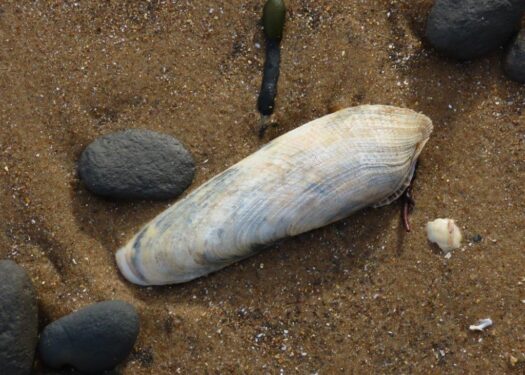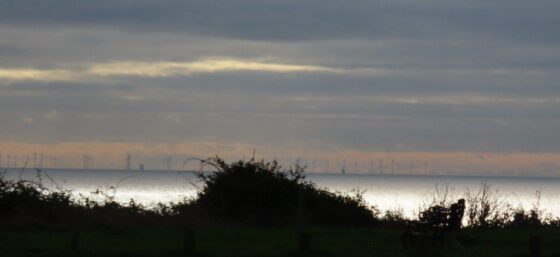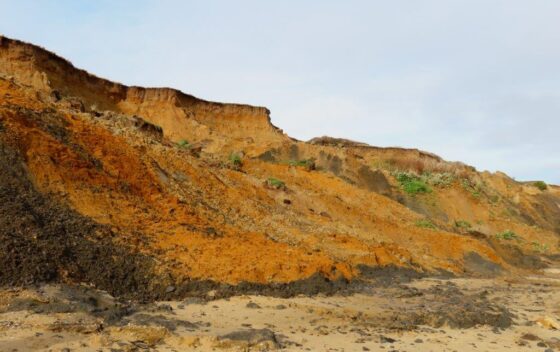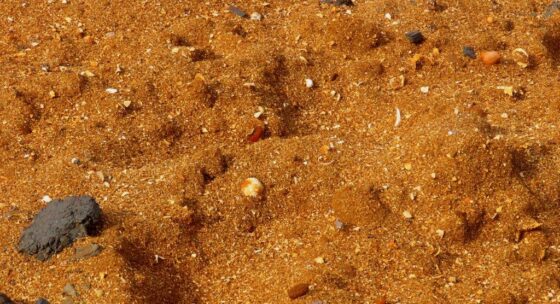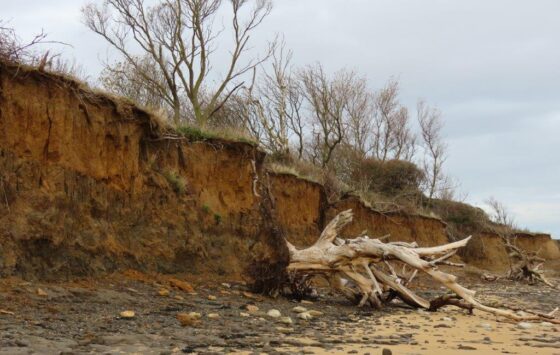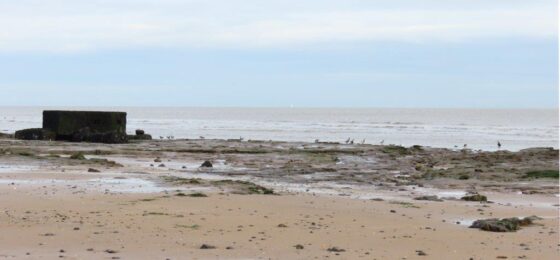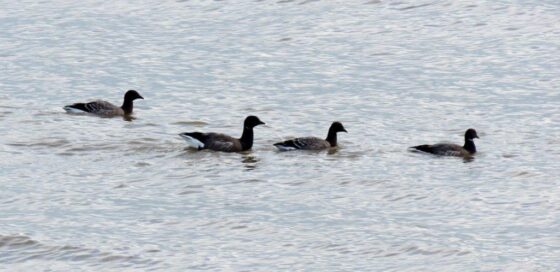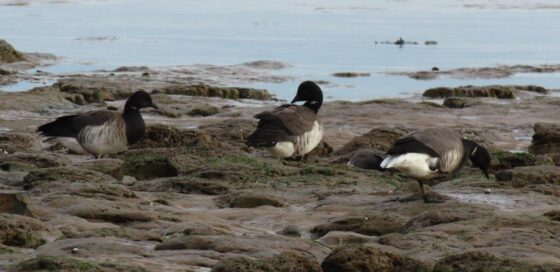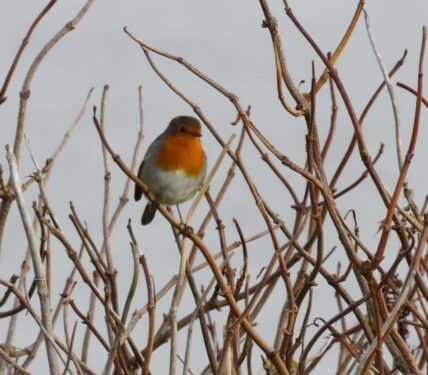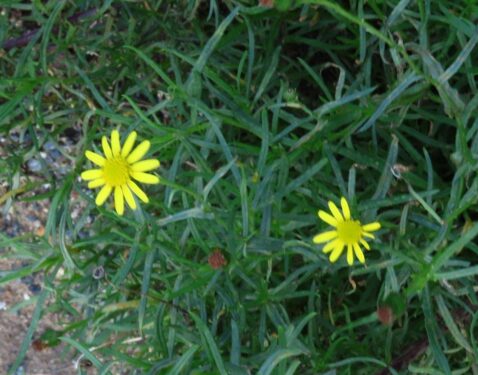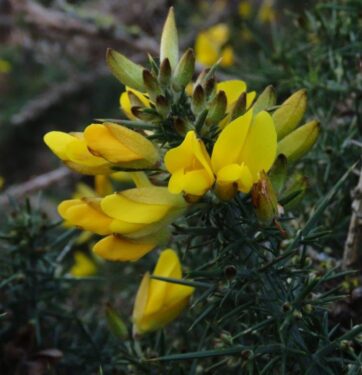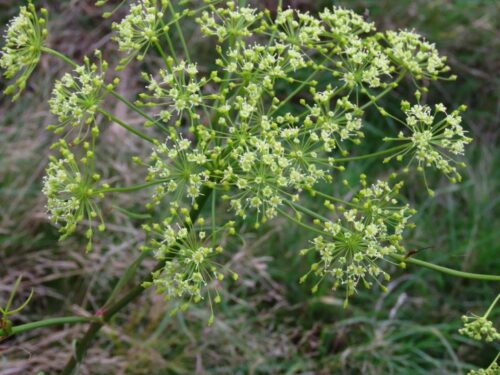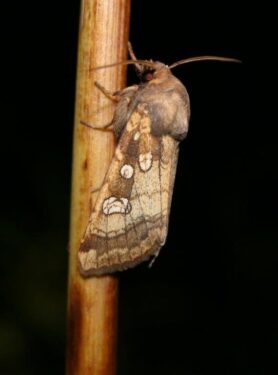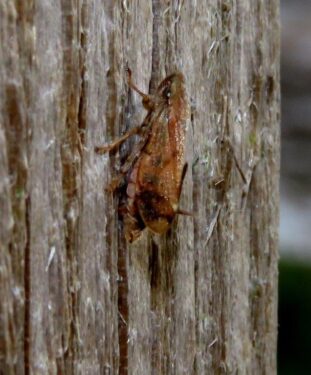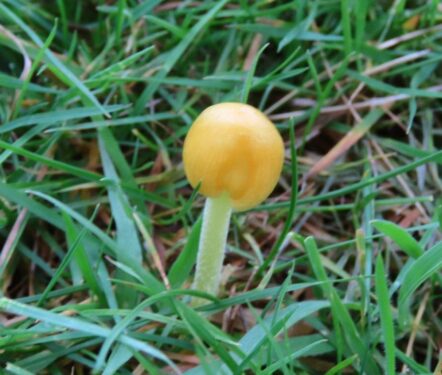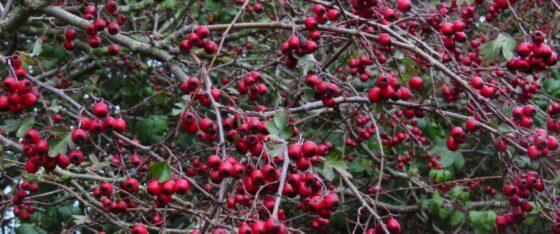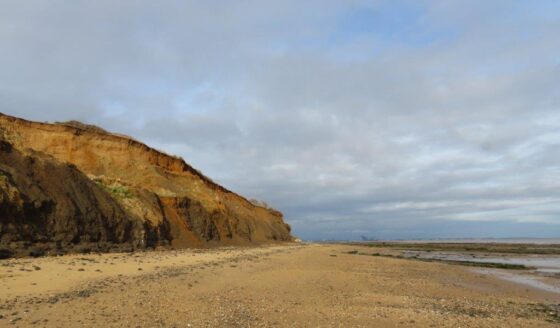Our annual exploration of the shore at Walton-on-the-Naze was as enjoyable as ever and we thank the group for getting as excited about the geology and shells as us! Some interesting finds included a piece of fossilised whale bone, a 50 million year old shark’s tooth, and several left-hand coiling whelks Neptunia contraria, fascinating as most gastropods coil in a dextral way.
Modern shells were to be found too, including the attractive Piddocks, or Angel’s wings, which bore vertically in the soft London Clay, making perfectly round holes as they do so.
We were lucky with the weather: although dull it was dry, a welcome contrast to the very heavy rains of the previous few days. This year we also offered an afternoon walk, atop the cliffs, to check out the wildlife away from the shore as well as the expansive sea views.
The whole area, a Site of Special Scientific Interest, is one of the finest geological sites in Britain, comprising layers of London Clay topped by Red Crag. The stunning redness of the Crag due to oxidisation of the sand and shell layer laid down over 3 million years ago when Walton was, as now, at the edge of the sea, just prior to it being engulfed in the turmoil of the last Ice Age.
Recent landslips were apparent. A combination of rainwater downwards, lubrication of the clay surface, and storm wave pressures make the whole area vulnerable – although exciting for geologists and fossil-hunters, nevertheless is extremely worrying for the buildings atop the cliffs, for example the famous Naze Tower, a 300 year old landmark built by Trinity House for navigational purposes, which year by year inches its way to the cliff edge (although now slowed by the creation of the Crag Walk).
Immersed in beach-combing as we were, we occasionally raised our eyes seawards to admire the bird-life. Many Dark-bellied Brent Geese were seen and heard, maybe 400 in total, all recently arrived from Siberia, with in amongst them a couple of Pale-bellied individuals. The Essex Coast is a vitally important place for Brent Geese and a fifth of the world’s population use our shores for winter feeding.
Other shorebirds included Grey Plovers, Turnstones and Redshanks, while in the cliff scrub Robins ‘ticked’ (probably Scandinavian migrants), families of Long -tailed Tits and a Cetti’s Warbler or two, in atypically subdued song.
After a restorative lunch we spent the afternoon ambling around the grassy areas atop the cliffs, and walking the seawall. We were struck by the amount of vegetation in flower – Narrow-leaved Ragwort (new arrival in these parts from South Africa), Sea Mayweed and Yarrow were easy to spot.
Less surprising, but very welcome to insects, was lots of Gorse in full flower (it is said to flower when ‘kissing is in season’ ie all the year round!). Its beautiful coconut scent and bright yellow flowers a real tonic on a dull winter’s afternoon.
The Sea Hog’s Fennel was a point of conversation – lots of these have been deliberately planted at the Naze, and for a specific purpose: it is an Ark population outside the reach of rising sea levels, for the moment at least. A very rare plant itself, it is the only food plant of an even rarer moth, the Fisher’s Estuarine Moth (shown below although not seen on the day!), which was first discovered in the area by Ben Fisher, a friend of ours and by chance also of one of our group.
As always, there is so much to discover in nature once you get your eye in. An as-yet-unidentified (but interesting-looking) small bug on the fencing by the seawall, Spangle Galls on oak leaves, Witches’ Brooms (also a gall, but caused by a fungus) on Silver Birch, plus some rather attractive grassland fungi and hedges laden with the fruits of the season. Autumn is really penetrating into the depths of winter this year!
Hopefully everyone enjoyed their time on the Naze, a place definitely worth returning to throughout the year as the seasons change.
So that’s about it for walks with WILD ESSEX for ’22. Still on our agenda is a free Zunday Zoom session on Sunday 11th December (see our next newsletter for the link) and then we hope to kick off next year with our annual Wild Flower Hunt on 1st Jan. Thanks to everyone who has joined us this year for events.
